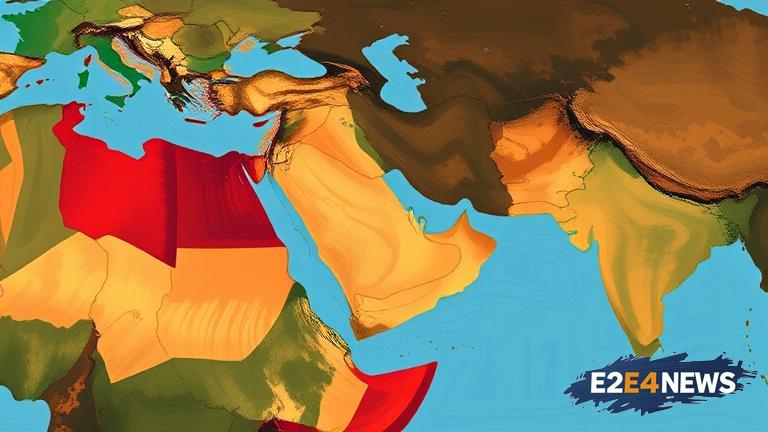The Middle East has been witnessing a significant surge in its economic influence, with several countries in the region emerging as key players in international trade. This shift is largely driven by strategic investments, diplomatic efforts, and a concerted push to diversify economies. Saudi Arabia, for instance, has been at the forefront of this movement, with its Vision 2030 aiming to reduce dependence on oil exports and foster a more diversified economy. The United Arab Emirates (UAE) has also been actively engaged in promoting trade and investment, with Dubai serving as a major hub for international business. Other countries in the region, such as Qatar and Bahrain, are also making significant strides in this direction. The Middle East’s strategic location, connecting Europe, Asia, and Africa, makes it an ideal hub for trade and commerce. Furthermore, the region’s rich natural resources, including oil and gas, have long been a major draw for international investors. However, with the global economy increasingly moving towards renewable energy sources, the Middle East is adapting by investing heavily in solar and wind power. This transition is not only expected to reduce the region’s carbon footprint but also create new opportunities for trade and investment. The growth of e-commerce and digital technologies has also been a key factor in the region’s economic rise, with many countries investing heavily in digital infrastructure. The Middle East’s young and tech-savvy population has been a major driver of this growth, with many startups and entrepreneurs emerging in the region. In addition, the region’s governments have been actively promoting trade and investment through various initiatives, such as free zones and special economic zones. These zones offer attractive incentives, including tax breaks and streamlined regulations, to encourage foreign investment. The Middle East has also been strengthening its ties with other regions, including Asia, Europe, and Africa, through various trade agreements and diplomatic efforts. For example, the UAE has signed several major trade agreements, including a comprehensive economic partnership agreement with India. Similarly, Saudi Arabia has been engaged in talks with the European Union to strengthen trade ties. The region’s economic growth has also been driven by its tourism sector, with many countries investing heavily in infrastructure and marketing campaigns to attract visitors. The Middle East is home to many world-class tourist destinations, including Dubai’s Burj Khalifa and Saudi Arabia’s historic city of Makkah. In conclusion, the Middle East’s emergence as a key player in international trade is a significant development with far-reaching implications for the global economy. As the region continues to diversify its economies and invest in strategic sectors, it is likely to play an increasingly important role in shaping the future of global trade. With its unique blend of traditional and modern industries, the Middle East is poised to become a major hub for international business and commerce. The region’s growth is expected to create new opportunities for trade and investment, driving economic growth and job creation. As the global economy continues to evolve, the Middle East is well-positioned to emerge as a leading player, driven by its strategic location, rich natural resources, and highly adaptable economies.
